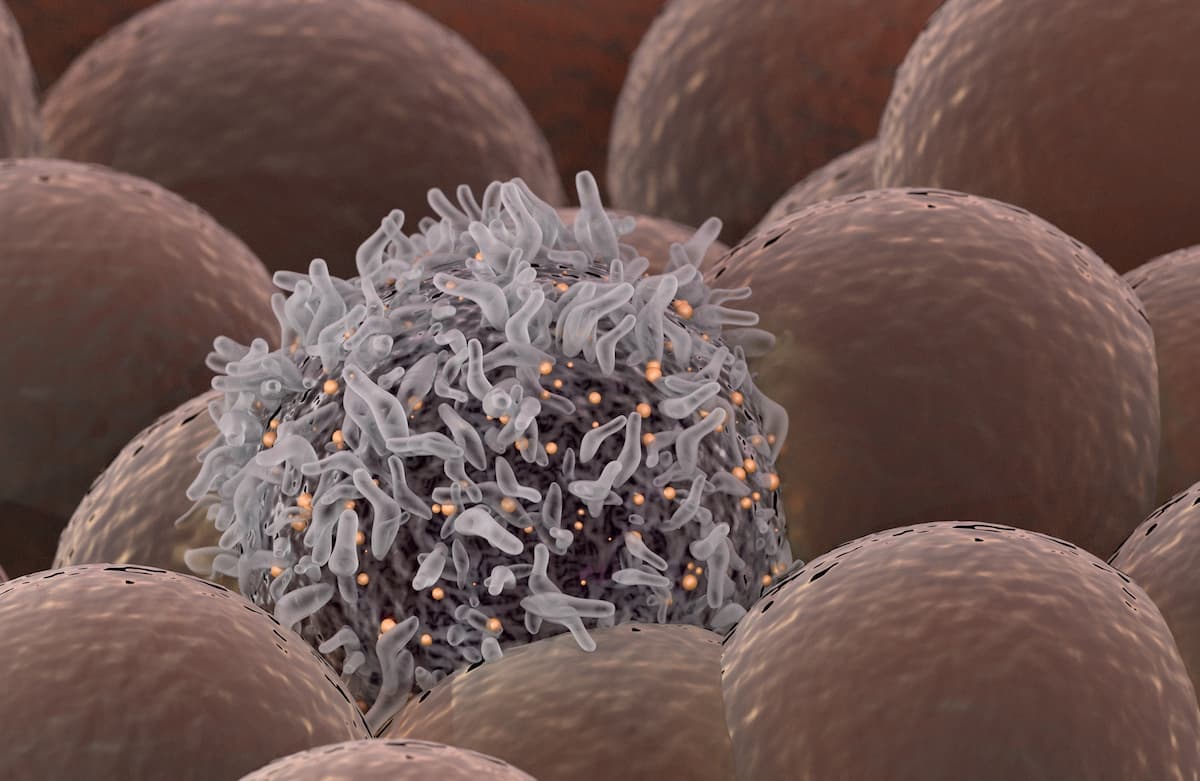IMA203 Shows Frequent, Enduring Responses and Tolerability in Melanoma
Phase 1 data highlight a manageable safety profile with IMA203 among patients with melanoma and other PRAME-positive solid tumors.
“We have showed that IMA203 has a favorable tolerability profile and induces frequent and durable responses in melanoma,” study author Martin Wermke, MD.

Therapy with IMA203, an investigational preferentially expressed antigen in melanoma (PRAME)–targeting T-cell therapy, yielded sustained responses among patients with melanoma and other solid tumors, according to findings from the phase 1 IMA203-101 study (NCT03686124) presented at the 2024 Society for Immunotherapy of Cancer Annual Meeting (SITC).1
IMA203 produced a confirmed overall response rate (ORR) of 54% and 60% among patients with cutaneous (n = 13) and uveal melanoma (n = 10), respectively. In each respective patient group, the unconfirmed ORR was 62% and 60%, tumor shrinkage occurred in 85% and 100%, and the disease control rate (DCR) at week 6 was 92% and 90%.
Other data showed a confirmed objective response in 1 of 3 patients with other types of melanoma, 2 of 4 with ovarian cancer, 1 of 3 with synovial sarcoma, and 1 of 6 with other types of disease. Tumor shrinkage occurred in 2 of 3, 3 of 4, 3 of 3, and 5 of 6 patients across each group; disease control at week 6 was achieved in 3 of 3, 2 of 4, 3 of 3, and 5 of 6, respectively.
The median duration of response (DOR) was 12.1 months (range, 4.2 to 25.5+) in the melanoma cohort. A response was ongoing in 1 patient after 26 months and in another patient at 24 months.
“We have showed that IMA203 has a favorable tolerability profile and induces frequent and durable responses in melanoma,” study author Martin Wermke, MD, of the National Center for Tumor Early Clinical Trial Unit of University Hospital Dresden, Germany, stated in a press briefing on these findings. “We think that these data more than justify the testing [of IMA203] in a phase 3 trial, which will start by the end of this year.”
According to Wermke, PRAME represents an ideal target for anti-cancer immunotherapy based on its prevalence in a variety of solid tumors such as melanoma, lung cancer, and gynecologic malignancies. Additionally, PRAME has a high target density as well as a “clean” homogenous expression profile, which may minimize the risk of on-target, off-tumor toxicity.
Developers designed IMA203 as autologous T cells transduced with PRAME-specific T-cell receptors. The agent is directed towards HLA-A*02:01–presented PRAME peptides and makes use of CD8-positive T cells that may specifically recognize and kill tumor cells harboring PRAME expression.
The total safety population of the IMA203-101 trial consisted of 70 patients. In the phase 1a dose-escalation portion of the trial, 28 patients received treatment with IMA203 across 4 dose levels. In the phase 1b dose-expansion portion of the study, 42 patients received the agent at dose levels 4 and 5; the efficacy population included a total of 41 patients.
The trial’s primary end points were treatment-emergent adverse effects (TEAEs) and dose-limiting toxicities.2 Secondary end points included the persistence of T cells, tumor response per RECIST v1.1 criteria, and immune-related responses.
Patients 18 years and older with an ECOG performance status of 0 or 1 and HLA-A*02:01–positive and PRAME-positive disease were eligible for enrollment on the trial. Other requirements for study entry included having prior treatment with or ineligibility for all indicated standard-of-care therapy, adequate organ function, no active brain metastases, no serious autoimmune disorder, and no immunosuppressive medication.
Grade 3 or higher blood and lymphatic system disorders affected 100% (n = 70/70) of patients in the safety population and mainly consisted of neutropenia (88.6%), lymphopenia (55.7%), and leukopenia (54.3%). According to Wermke, the incidence of cytopenias—which affected 1 patient—was expected.
Grade 3 cytokine release syndrome (CRS) and immune effector cell-associated neurotoxicity syndrome (ICANS) affected 11% and 4% of patients, respectively. Data showed no grade 4 events of CRS and ICANS. Additionally, there were no grade 5 toxicities associated with IMA203.
References
- Wermke M, Alsdorf W, Araujo DM, et al. ACTengine IMA203 TCR-T targeting PRAME shows deep and durable anti-tumor activity in heavily pretreated solid cancer patients. Presented at the 2024 Society for Immunotherapy of Cancer Annual Meeting (SITC); November 6-10, 2024; Houston, TX. Abstract 687.
- ACTengine® IMA203/IMA203CD8 as monotherapy or in combination with nivolumab in recurrent and/or refractory solid tumors (ACTengine). ClinicalTrials.gov. Updated November 8, 2024. Accessed November 8, 2024. https://tinyurl.com/ycxpauhk